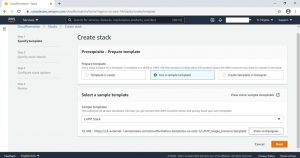As a team of Certified Cloud Practitioners, we were approached by a company that needed our services. This company had purchased a domain name from a third party company and wanted us to host their application files on the AWS cloud. I think you may be wondering why AWS (Amazon Web Services). Well, here is a little on that! With AWS, you only pay for the resources you use and do not have to make extra provisions that you will not use (Pay-as-you go pricing). Again, AWS is very elastic in nature. What this means is that, it is able to scale up and scale down to meet the demands of your application or resources. You do not have to worry about capacity needs as AWS handles that. How cool is that! Another interesting part of it is with AWS you are able to go global in minutes making it Agile in nature. I mean these few advantages of AWS is enough to convince you that choosing AWS cloud was the best decision the company made.
As Client-centric as we are, we decided to sit with our client to know their specific requirement on how the application should be hosted so we come up with a solution that will satisfy them. After deliberations, we realized our client wanted the application to be hosted on a Linux operation system, Apache be used as the web server, MySQL as the database as well as Php as the programming language.
We realised as a team that there were a lot of options available for us to implement this solution in the AWS cloud but we decided to use the AWS Cloudformation. AWS CloudFormation is a service that gives developers and businesses an easy way to create a collection of related AWS and third-party resources, and provision and manage them in an orderly and predictable fashion. Cloudformation allows you to create stacks, which are a collection of various resources you will need to run your applications. With Cloudformation stacks, once you have found one that suits your needs, you just go ahead and use it and you wouldn’t have to go through the whole process of creating a new stack if you need the same provisioning for another project in the future, since it can be saved and reused. This goes a long way to help save time.

Figure 1: Creating a new stack with AWS Cloudformation in the AWS management console. As a team, we decided to use a pre-existing Cloudformation template called the LAMP STACK, which had the specific requirements our client wanted. LAMP which in this case stands for Linux Apache, MySql and Php provided us with the exact requirement we needed and the good thing is we were able to get these resources provisioned in less than 2 minutes. How easier could this have been! This goes on to buttress the fact that with AWS you have a shorter time to market.

Figure 2: the LAMP STACK
With the environment set, we moved the application files which was initially hosted on another repository system into the AWS cloud. We then redirected the domain name with our client had already purchased from a third party agent to the new location of the application files so that users of that domain name can still access the web application in it new environment which gives a better user experience and also very efficient and economical to our client.
And Voila! We were able to host the application files successfully on AWS cloud. And I bet our client was really happy with the work done! Trust us with your cloud work and expect nothing but the best.








